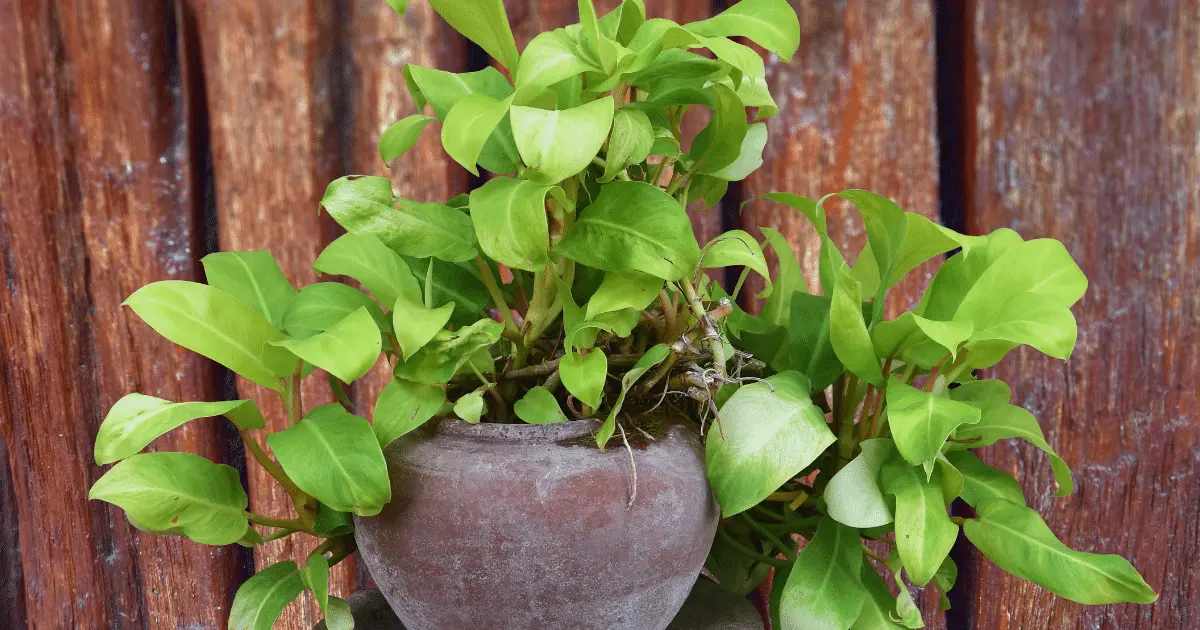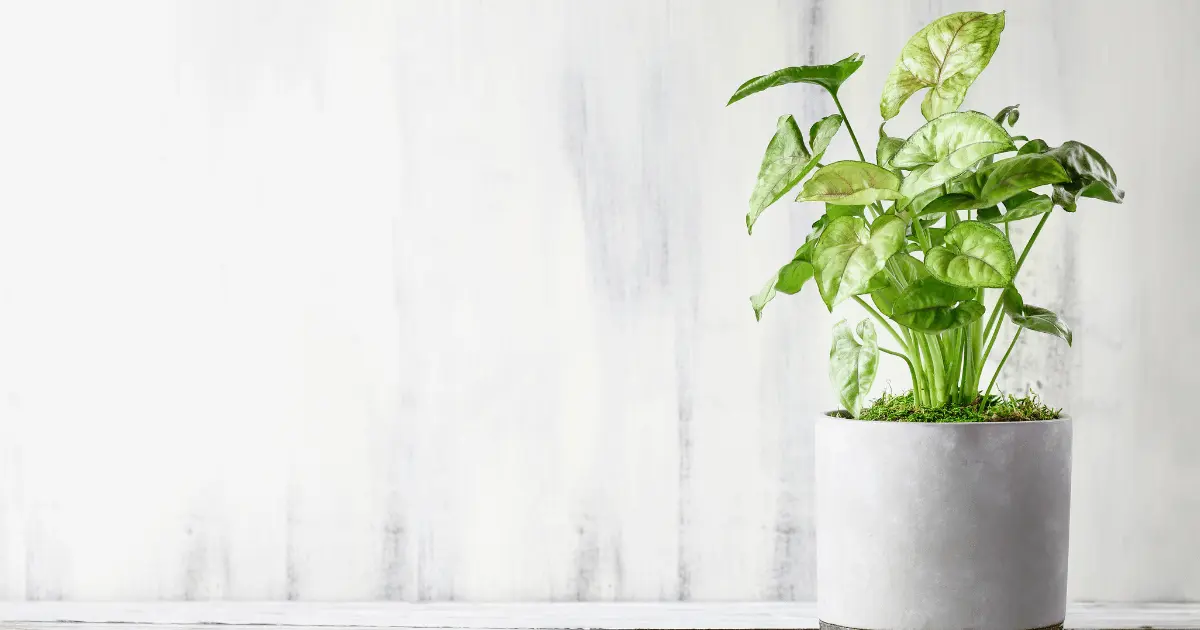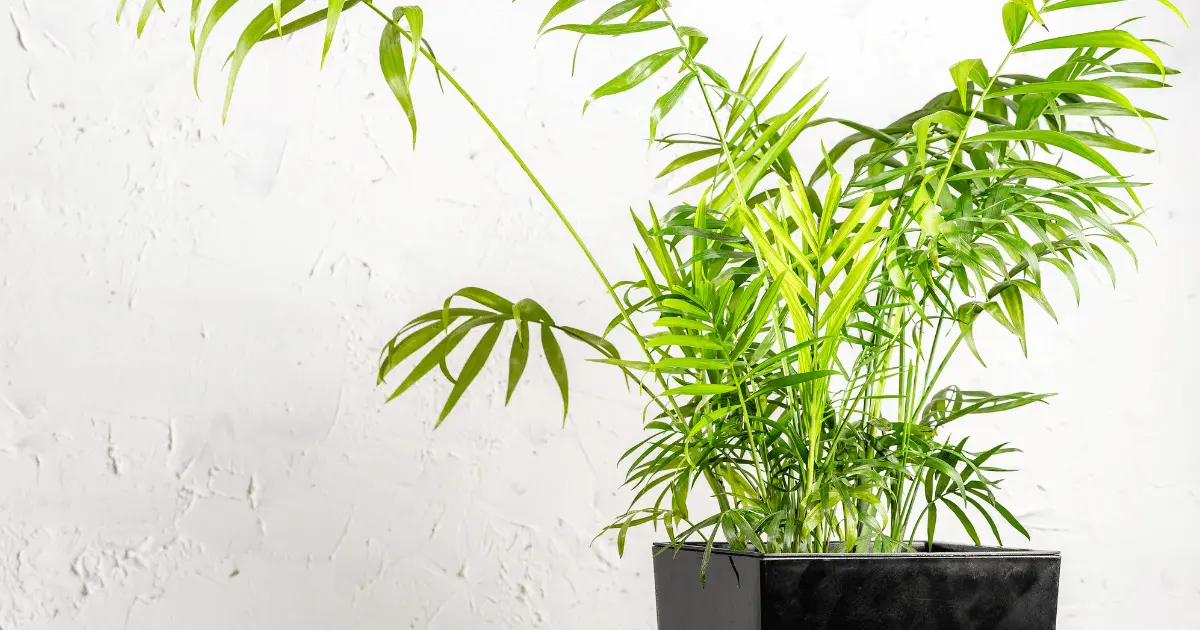Indoor plants are part of natural indoor environments, and since people spend 80-90% of their time indoors, indoor plants may benefit their health and comfort. Indoor plants boost mood, reduce stress, and act as indoor air purifiers.
Indoor plants are an effective way to reduce indoor pollutants and reduce human exposure. They also have potential applications in other fields, including sensing, solar energy, acoustic, and people’s health and comfort.
20 Tall Indoor Plants For Low Light
Indoor plants vary in size, shape, and color, providing many options for integrating little or no natural sunlight into your homes and offices.
1. Dragon Tree

Dragon Tree (Dracaena Draco) is an attractive plant with palm-like fonds and hails from the Canary Islands. The dragon tree is the ideal centerpiece for any dry landscape.
The tree can take a decade to reach over 1m in height, but its growth may increase in cultivars where moisture and food are more available. Indoors, dragon trees may grow as tall as 6 feet or sometimes more.
2. Snake Plant

Snake Plant (Dracaena trifasciata) is one of the most common houseplants grown in homes with little natural sun exposure. The plant features stiff, sword-like leaves and can range anywhere from six inches to eight feet tall.
Snake plants are easy to care for, withstand drought, and rarely need repotting. The leaves come in a wide range of colors from white to yellow, green-striped, and green leaves cross-banded with distinct golden edges. They can be grown from seeds, and it can take between three to six weeks before you see a seedling.
3. African Mask Plant

African Mask Plant (Alocasia x amazonica), also known as Kris plant, is one of the unusual-looking tropical houseplants prized for their unique-looking leaves. The plant gets its name from its resemblance to the hand-carved ceremonial masks, but actually from the Philippine Islands. Depending on the variety, this plant can grow 2 feet tall and 2 feet wide to 5 feet tall and 5 feet wide.
4. Corn Plant

Corn Plants (Dracaena fragrans) are a member of the Dracaena family. They are also a dramatic specie sporting dark green foliage with a lime green stripe running down each leaf’s center.
The leaves are even more striking by the wide yellow stripe that runs down the middle. Corn plants can grow up to 6 feet tall, with leaves up to 4 inches wide. For healthier growth, plant in well-draining soil and ensure it stays moist.
5. Pinstripe Plant

Pinstripe Plant (Calathea ornate) is a striking member of the Maranatha or prayer plant family. This tropical plant is loved for its eye-catching silvery to pink veins that look like a pinstripe.
The plant features a contrasting green and pinkish leaves spot and a purplish-red underside to brighten any indoor living space. They can grow up to 2 feet tall and wide, making them larger plants that fill a room nicely.
6. Cast Iron Plant

Cast Iron Plant (Aspidistra eliator), also known as bar iron plant, is named for its ability to survive a wide range of conditions. As an attractive plant, cast iron handles low light, low humidity levels, infrequent watering, and temperature fluctuations, reaching a height of about 3 feet tall when fully mature. Because of their ability to survive in various conditions, cast iron plants will take a lot of time to mature into the low-light houseplant you wish for.
7. Swiss Cheese Plant

Swiss Cheese Plant (Adanson’s monster) is a species of flowering plant from the family Araceae. It is a popular houseplant and a striking addition to any room because it has few pests and diseases.
Swiss cheese plant grows up to 2-feet wide and looks like they have holes or cuts in them. In its natural setting, the plant grows beneath the canopy of large trees, meaning it prefers indirect sunlight or sun filtered by a sheer curtain.
8. Lucky Bamboo

Lucky Bamboo (Dracaena sanderiana) is a popular houseplant because it grows in low light in homes and offices. Lucky bamboo is highly effective at purifying the air and creating a healthy environment. Lucky bamboo is one of the easiest house plants to grow indoors, and it can survive in a wide range of conditions, including low light and lack of water.
9. ZZ Plant

ZZ Plant (Zamioculas zamifolia) is an attractive plant that was extremely popular in the 1990s, especially in office settings, and can do well in low light. They are also Zanzibar gems for their spotless, waxy leaves that are deep green sometimes.
ZZ plants are slow-growing plants that prefer bright and indirect sunlight. For optimal growth, ensure you water the plant when the top 1 to 2 inches of the soil surface dries out. Then give it a dose of an all-purpose plant fertilizer every six months at a minimum.
10. Asparagus Fern

Asparagus Fern (Asparagus setaceus) are dense, ferny-leaved perennials closely related to the common edible garden asparagus. This plant is usually planted in the spring and has a lot of good qualities. It can grow 3 to 4 feet wide, with its cascading stems reaching up to 3 feet.
Asparagus fern can spread rapidly when planted outdoors for optimal growth in warm and humid climates. Water the plant when the soil begins to dry out and mist the foliage periodically with room-temperature water to keep the humidity high around the leaves.
11. Weeping Fig

Weeping Fig (Ficus Benjamina), the Benjamin fig or ficus tree, is part of the ficus plant genus. It is commonly found in the hallways of shopping malls and many offices.
Weeping figs get their name from the characteristic narrow and arrow-like leaves that line delicate stems. The plant has slender branches that arch gracefully from a light gray trunk with dense, glossy dark leaves.
12. Ponytail Palm

Ponytail Palm (Beaucarnea recurvata (check)) is a unique-looking long-lived indoor plant that is easy to grow. It consists of a large, domed “stump” that tapers into a thinner stem.
Indoors, the leaves can get up to 3 feet long, but outdoors, they may be twice that length. In its native environment, which is eastern Mexico, ponytail palms can reach up to 30 feet in height.
13. Spider Plant

Spider Plant (Chlorophytum comosum) is another easy-to-grow plant that is an excellent option for a low-light houseplant. Because of its slender leaves, this plant is perfect for hanging baskets or sitting on top of a cabinet.
When grown indoors, this plant will survive in less-than-perfect conditions. The plant can grow in various soil types but prefers loose, loamy soil with sharp drainage.
14. Pothos

Pothos (Epipremnum aureum) is one of the easiest and most commonly grown houseplants because it survives in low light conditions. Pothos and philodendron plants are often mistaken for each other because of their similarities in appearance and developing conditions.
Pothos plants have pointed, heart-shaped leaves in shades of green with variegations in white, yellow, and pale green. In the wide pothos, plants can grow up to 6o feet and six to ten feet indoors.
15. Arrowhead Plant

Arrowhead Plant (Syngonium podophyllum), also known as goosefoot, is a semi-tropical plant known for its unique arrow-like leaf shape. It comes in various hues ranging from solid greens to bronze and many shades of variegations. As the plants’ age, the leaves mature and change shape from arrowhead to lobed leaf.
16. Alli Ficus
Alli Ficus (Ficus maclellandti) is an evergreen plant often grown as a houseplant in temperate climates. It has long, slender leaves with arching stems that are almost palm-like in appearance. Its drooping leaves soften a room while adding interesting texture.
The plant can be pruned and manipulated to suit your desired aesthetic. A significant advantage is that all ficus tolerates temperature fluctuations, handling short periods of excessive cold and heat.
17. Chinese Evergreen

Chinese Evergreen (Aglaonema spp) are popular houseplants for low light conditions. The plant comes in various colors, including plain green, speckled, blotchy, and variegated varieties, and the leaves can grow up to 12 inches long and 3 to 4 inches wide.
Chinese evergreen thrives in filtered sun to partial shade. For optimal growth, water the plant until the soil is moderately moist, then allow the top inch of the soil to dry out before the next watering.
18. Parlor Palm

Parlor Palm (Chamaedorea elegans) is a tropical bright green fan-shaped leaves that arch gracefully as they grow. The plant grows in small clumps of thin trunks and reaches between 2 and 6 feet in height.
For best growth, use a high-quality potting mix that drains well. Water the plant when the top inch of the soil has dried out.
19. Lady Palm

Lady Palm (Rhapis excels) is a slow-growing indoor tree that tolerates low light and thrives in typical household temperatures. Lady palms can be drought tolerant but thrive best in regular water and fertilizing. Other than that, these plants are easy to care for, meaning they only need occasional pruning to maintain their shape or to get rid of dead fronds.
20. Rubber Plant

Rubber Plant (Ficus elastica) is a popular tall indoor plant that can grow anywhere from 6-10 feet tall indoors and even taller outdoors when given enough space. With their broad waxy leaves, rubber plants can suit any space, blending in with your indoor forest and standing out as a spectacular feature.
The leaves could be deep green, tricolor, or almost black, depending on the variety. Rubber plants are relatively laid back and enjoy moist soil but will prefer a dry out a little before your next watering.
Tall Indoor Plants Not To Grow In Low Light
While most plants will do well in low light, there are some that need direct sunlight for optimal growth.
1. Fiddle Leaf Fig
The fiddle fig leaf (Ficus lyrata) is one of the most popular indoor trees because of its dark-green violin-shaped leaves and their dramatic statement in any space, especially indoors. They are relatively fast growers and will grow taller than six feet if given the proper care. The trees aren’t demanding as long as their light requirements are met.
In low light conditions, fiddle leaf figs may turn yellow and fall off, detracting from the complete bushy look. Aside from this, the tree needs to be rotated every few weeks, so every inch of the plant gets some light.
2. Banana Tree
Banana Tree (Musa paradisiaca) are large, waxy leaves that can fill any space in your home. They need at least six hours of direct outdoor sunlight per day to thrive. They are incredibly thirsty, requiring frequent, deep watering and high humidity.
3. Yucca
Yucca (Yucca elephantipes) is another indoor plant unsuitable for low light. Low light conditions can cause yucca leaves to thin out and can cause a slow-down in their growth.
The plant is relatively drought tolerant, and if given enough sunlight, it will tolerate a few days of neglect. Over time, yucca will gradually lose their lower leaves, giving the plant a pleasant tree-like appearance.
3. Bird Of Paradise
Bird of paradise (Strelitzia) is popular for their tropical looks, striking bright orange flowers, and relatively easy-going nature. The leaves on this plant are arranged to form a fan-like clump of thick, waxy, and evergreen foliage.
The color of the leaves varies from glossy, deep green to blue-green to muted gray-green. They do not thrive in low-light conditions as they need plenty of direct sunlight to grow and maintain their speedy growth. Like banana trees, birds of paradise are also thirsty and need consistent watering and moist soil.
4. Africa Candelabra Tree
Africa Candelabra Tree (Euphorbia ingens) are succulent plants that do not tolerate low light conditions. It also goes by common names, including cowboy cactus and good luck cactus. The foliage is ephemeral, meaning most photosynthesis is carried out by the green cactus-like stems erecting upwards.
The tree grows to 36′ feet tall, and in rare cases, it can grow up to 15 meters tall. Africa candelabra tree will grow best in the sunniest spot in your house or near a bright window. However, it will not grow in low light, let alone thrive, and will die if left this way.
